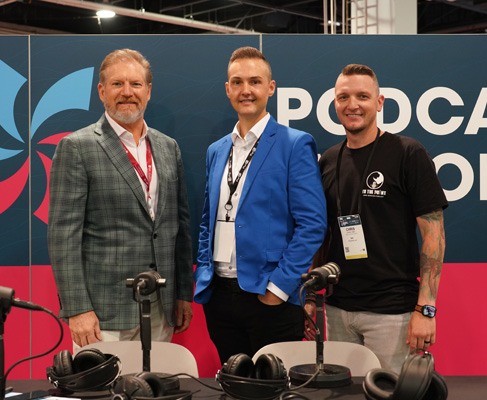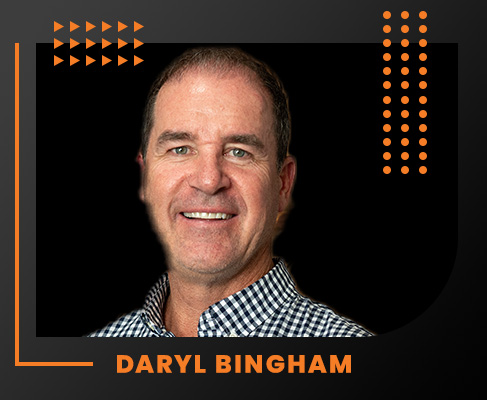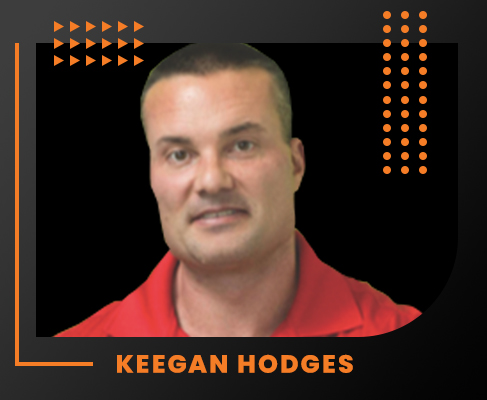Indoor air quality (IAQ) has become much more a part of the conversation in recent years, and for obvious reasons. The pandemic forced IAQ into the spotlight, but it’s been around for decades. Jerry McGuire, President of PuriFi Labs joins To The Point to talk about the current state of IAQ, how it’s evolved over the years, and how to identify proof amongst the promises in the industry – recorded live from AHR Expo 2022 in Las Vegas with co-host and To The Point superstar Ken Goodrich!
From Rooftop Filter Swaps to Advanced IAQ Technology
Jerry’s start in the trades was pretty simple. He was in charge of changing out filters on rooftop units on the tops of Taco Bells and KFC restaurants. There were a few things he learned at the start of his career; the first of which is that he didn’t like the smell and doesn’t eat at those restaurants anymore. The second and more important thing he learned was how important IAQ was. There are opportunities to make IAQ better depending on a range of factors. How well you service the system, the technology you choose, maintenance, and more.
The next step in Jerry’s career was the opportunity to work in the IAQ division of Daikin. This was mainly in the air filtration division of AAF Flanders. Jerry worked there for 15 years and helped grow that business to about 1.4 billion dollars. What was great about that time was that Jerry witnessed the evolution of IAQ technology, and the improvements we’re able to now achieve for different facilities and applications. Jerry then did a bit of consulting, and over the last 18 months has joined with PuriFi labs to work on the next frontier of indoor air quality.
A Shift from Push to Pull
The main shift in recent years in the IAQ industry is a shift in emphasis and desire for improved indoor air quality. Jerry spent 15 years in the industry trying to push this idea of clean air towards people. Now, the world is trying to pull IAQ into their lives in a different way than ever before. The pandemic has also increased the general knowledge of the population on air quality and how it affects our lives.
Jerry notes seeing people tweeting about microns and MERV ratings now, and he never thought that would happen! Once he started seeing signs like that, he realized the consumer was going to start to pull. The demand curve has changed significantly and that means a lot for service business. While the technology has certainly improved and evolved over the years, the demand is truly a noteworthy breakthrough for the IAQ industry.
Defining the Terms
If you’re in the HVAC industry, do you actually know the definition of air conditioning? If you look at the Merriam-Webster dictionary, it is to equip (something, such as a building or vehicle) with an apparatus for washing air and controlling its humidity and temperature. Right there in the definition, you see that cleaning the air is first and foremost. That certainly isn’t the focus for most. We tend to look just at the thermostat and whether our customers are happy with temperature, but what about humidity and the actual quality of the air? If you’re providing air conditioning services, are you actually providing the full range of services according to the definition?
IAQ is a specific part of HVAC, and Jerry describes it as dealing with pathogens, particles, and aerosols. It’s what you do with these to deliver clean air as well as keep it at the right temperature Ken Goodrich points out that when he talks to his team at Goettl about doing the right thing, it’s understanding the definition of their job. It’s cleaning the air, controlling its temperature, and controlling the humidity.
IAQ is Personal
Jerry is a chronic allergy and sinus sufferer, so IAQ is even more personal for him. The first time he installed this technology in his home, they were measuring particles like you would in a scientific “cleanroom”. When they measured the number of microparticles per cubic centimeter, he’ll never forget the result: 386. If you were to do to the math and extrapolate that, it means Jerry was consuming 1.5 trillion particles into his lungs and bloodstream every single year. No wonder he was having issues!
Jerry watched as they installed the technology and watched that number drop down from 386 to 50 in just a few hours. He doesn’t really ever experience that number above 50 anymore. His home doesn’t have odors, and the air is crisp and clean. So much so that guests often comment on it! They’ll say they don’t quite have the words to describe it, but that the air smells like “nothing”, or that it’s “pure”. IAQ technology can improve the feel of your home, and even your psychology. When Jerry sees his PuriFi readings show that low number every single day and a pleasant green color to say his IAQ is in a good range, it gives him comfort. Better yet, when that number does rise and that color changes, he can watch as the system automatically takes action and lowers the number right there in front of him.
Current Challenges of IAQ
If indoor air quality is so great, why has it taken so long for consumers to start demanding it? Surely it’s more than simply the pandemic, and a closer look tells us there are some clear hurdles to get over for both contractors and customers alike. Peter is quick to agree, and Ken Goodrich quick to speak on behalf of contractors.
Accessibility
One of the big things is that the IAQ industry often struggles to make things simple and accessible. The technical, “engineer-y” verbiage gets too complicated sometimes and only serves to put people off. Pathogens, microns, MERV ratings–the average consumer just wants to know if it works!
Peter says the questions he tackles most often are pretty straightforward. From contractors, it’s “can you simplify this for me”. Contractors know that their technicians need to be able to talk about this stuff at the kitchen table, so it needs to be clear, concise, and in plain English. The customer is asking “how do I know if it’s working?” Contractors have to be able to answer that question, and they feel like they don’t have a great answer a lot of the time.
Proof
The elephant in the room is the snake oil in the bottle. There’s a history of lots of bold claims in the IAQ industry, and not every product is backed with the same level of research to back them up. The first thing to understand is that right now, there aren’t really any standards for how a technology should be tested against pathogens. That’s changing quickly, however. The EPA and other organizations are already developing what those standards should be. In the meantime, PuriFi Labs has tried to simplify how a contractor or service organization can decide what products to represent. Jerry believes that your reputation matters.
Ask for the lab reports! And then, ask yourself if you’re going to install it and use it in the same way that the product was tested. Not every duct-mounted IAQ accessory is installed in ductwork during laboratory testing. Jerr has seen air filtration devices being tested sitting on a desk with a giant box fan behind them. That’s not how your customers are eating at their kitchen table. Why would you want to recommend a product to your customers that isn’t going to work the way it’s advertised?
PuriFi Labs has the data to back up their claims, and makes it all readily available. In fact, they’re always testing. The office at PuriFi Labs is always being measured, and has air 7 to 100 times cleaner than outside. The technology is changing the physics of the environment, and they are measuring it all to confirm it’s working in the real world.
Make it Easy
With temperature, it’s pretty easy. A customer of yours wants the temperature to be 72 degrees, and their AC only gets the thermostat down to 80 degrees. That’s simple! Why isn’t IAQ like that? Peter points out that PuriFi labs has worked hard to make it exactly that simple. He advises contractors looking at IAQ technology to look for proof, not promises..
Just like a thermostat measures temperature, there are devices that measure IAQ. PuriFi’s PM sensor comes with an app that aligns to both World Health Organization (WHO) standards and the Environmental Protection Agency (EPA) standards for IAQ. It uses easy colors (green, yellow, and red) to tell you how your IAQ is, and a simple number to look at. It also tells you if it’s working or not.
Even still, it’s not enough to tell someone their IAQ is terrible. You have to do something about it. PuriFi’s PM sensor will automatically activate a generator installed in a central HVAC system to utilize patented Airborne Molecular Purification (AMP) technology to get the IAQ back to normal – all without needing to turn on the AC or furnace.
Why PuriFi?
Jerry pursued changing air quality in the breathing zone for people, and found a technology that could do that with more than a promise. It does it with proof. What PuriFi asks any dealer, contractor, service organization, or distributor to ask themselves is, “Can I prove what I’m promising?”
PuriFi Labs can. There is a new opportunity on the frontier of indoor air quality, and Jerry uses three “R”s to describe it: Revenue, Reputation, and Referrals. Your revenue is going to grow because the opportunity is there and people simply want IAQ now. After spending years building your reputation, you want to partner with companies that will boost your reputation, not harm it. PuriFi provides all of the validation, technical documentation, apps, and sensors you could ever want to prove it works every single day. Lastly, when your customers see how well the products work, and their friends and family ask them about that little device with a green number and your contractor sticker on the side, who do you think they’re going to call to improve their lives as well?
PuriFi Labs takes your reputation seriously. They want to support it, expand it, and serve businesses by doing well while doing good. It’s impact on more than just revenue–it’s on people, too. If you’re interested in learning more, give the PuriFi Labs website a look!



